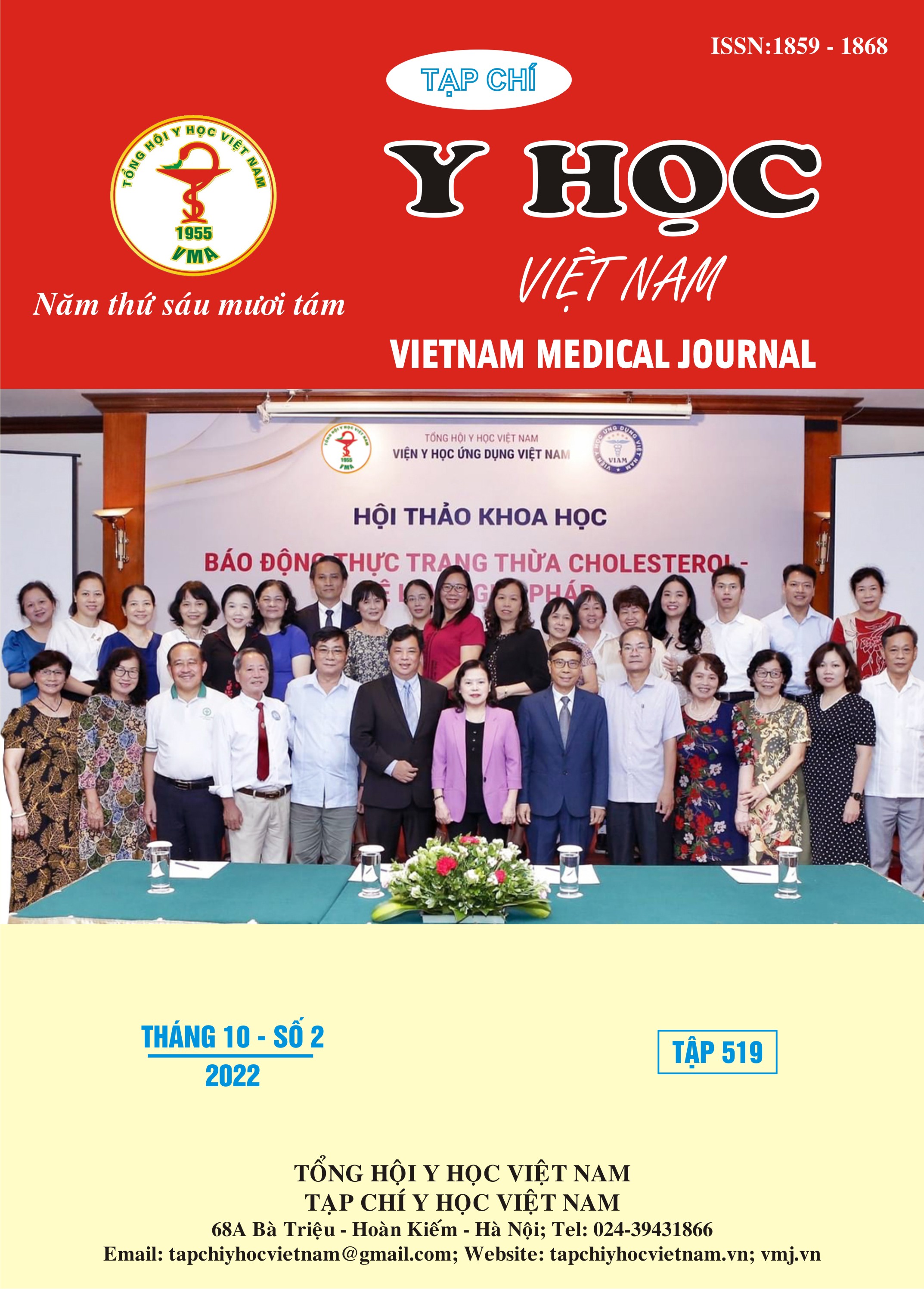DETERMINATION OF HUMAN PAPILLOMA VIRUS GENOTYPES BY REAL TIME PCR IN PATIENTS TESTING AT PASTEUR INSTITUTE HOCHI MINH CITY 2021-2022
Main Article Content
Abstract
Introduction: Screening for cervical cancer is currently done by Pap smear, but the sensitivity is not high and is often detected at a late stage, after a patient has been infected with HPV for a long time. Therefore, we performed Realtime-PCR technique in this study for the purpose of early, accurate diagnosis and understanding of different HPV genotypes that are sexually transmitted as well as risk factors in HPV infectious diseases. Objective: To identify HPV genotypes and their related factors by applying Real-time PCR technique on patients who get screened for cervical cancer and other HPV-related cancers at Pasteur Institute in Ho Chi Minh City from October 2021 to June 2022. Methods: Cross-sectional descriptive study. The study applied Realtime - PCR molecular biology technique to detect different HPV genotypes, including: 2 low-risk types and 14 high-risk types on 161 samples of patients over 18 years, obtained from cervical smears (females) or urethral smears and/or external genital lesions (males). Results: The rate of HPV infection was 38.5% (n=161), 29.4% (male) and 48.7% (female); the highest in the age ≥40 years (60.9%), compared with distribution group according to 3 age groups and 2 age groups, respectively: p=0.023 and p=0.017. Analysis by transmission route showed that the heterosexual group was 39.4% (n=137) and same-sex group is 33.3% (n=24). The group of heterosexual women: 48.7% (n=76), while heterosexual men: 27.9% (n=61), the difference was statistically significant with p<0.05. The percentage of men who had sex with men is 33.3% (n=24), which is higher than that in men who were bisexual, 27.9% (n=61), the difference was not statistically significant (p=0,619). The prevalence of high-risk group (HRG) HPV was 50%, low-risk group (LRG) was 61.3%. Single and co- infection: 75.8% and 24.2% (p=0,039). The rate of single infection with genotypes was: HPV 11 (50%), HPV 6 (14.5%), HPV 18 (12.9%), HPV 16 (11.3%), HPV 52 (9.7%), HPV 59 (6.5%), HPV 39 and 58: 4.8%, HPV 31, 33, 45, 51, 66 all accounted for 3.2%. Co-infection in the LRG (6/11) was 2 cases; between HPV 11 and HRG were 5 cases: (HPV 11/18; 11/31; 11/52; 11/39/68; 11/39/52/59); HPV 6 and HRG: HPV 6/33; 6/58/66; between HRG: 3 cases (HPV 33/52 and 2 cases of HPV 18/45). Conclusion: The overall HPV infection rate was 38.5%, with a single infection rate of 75.8%, and co-infection: 24.2 (%), in which the HPV LRG accounted for the majority of cases. HPV 11 is the genotype found most in the LRG (50%). The rate of most common genotypes in the HRG was HPV 18 (12.9%), followed by HPV 16 (11.3%) and HPV 52, 59 are 9.7% and 6.5%, respectively. The molecular biology techniques, especially Real-time PCR meets the requirements of early, fast and accurate diagnosis which comes with routine screening tests for cervical cytology to help control and improve patients' lives, contributing to reduce the rate of cervical cancer.
Article Details
Keywords
HPV: Human Papilloma virus, LRG: low risk group, HRG: high risk group
References
2. Cao Minh Nga và cs (2011), “ Sự phân bố các genotype HPV (Human Papillomavirus) ở phụ nữ và các yếu tố liên quan”, Tạp chí Y học TP. Hồ Chí Minh. 15 (1),pp.205-211.
3. Cao Hữu Nghĩa (2016), “Khảo sát tỷ lệ nhiễm Human Papilloma virus 6/11/16/18 ở bệnh nhân khám sàng lọc tại Viện Pasteur TP.HCM bằng kỹ thuật sinh học phân tử Realtime-PCR”, Tạp chí Y học Thực hành (1005), pp 147 – 149.
4. Hồ Quang Nhật và cs (2022), “Nghiên cứu tỷ lệ nhiễm HPV nguy cơ cao ở phụ nữ có tổn thương tiền ung thư cổ tử cung tại Bệnh viện Từ Dũ”, Tạp chí Phụ sản; 20(1), pp.43-48
5. Vũ Thị Nhung (2007), "Liên quan giữa các tuýp HPV và các tổn thương tiền ung thư - ung thư cổ tử cung tại Bệnh viện Hùng Vương", Tạp chí Y học TP. Hồ Chí Minh. 11 (2),pp.93.
6. Lê Quang Vinh, Lê Trung Thọ (2012), “ Nghiên cứu tỷ lệ nhiễm Human Pappillomavirus ở phụ nữ tỉnh Thái Nguyên, Huế và Cần Thơ”, Tạp chí Phụ sản. 10(2), pp.130-136.
7. Hyuna Sung, Jacques Ferlay, Rebecca L Siegel, Mathieu Laversanne, Isabelle Soerjomataram, Ahmedin Jemal , Freddie Bray (2021), "Global cancer statistics 2020: GLOBOCAN estimates of incidence and mortality worldwide for 36 cancers in 185 countries", CA: a cancer journal for clinicians. 71 (3), pp.209-249.
8. Lihong Chang, Puwa Ci, Jufang Shi, Kan Zhai, Xiaoli Feng, Danny Colombara, Wei Wang, Youlin Qiao, Wen Chen , Yuping Wu (2013), "Distribution of genital wart human papillomavirus genotypes in China: A multi‐center study", Journal of medical virology. 85 (10),pp.1765-1774.


